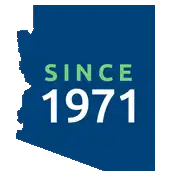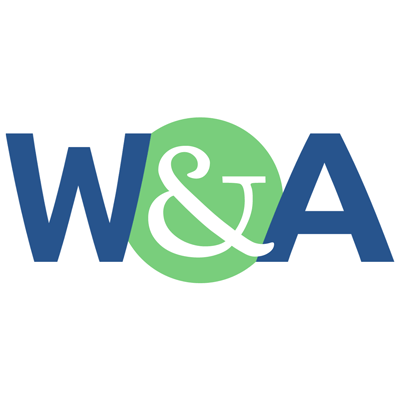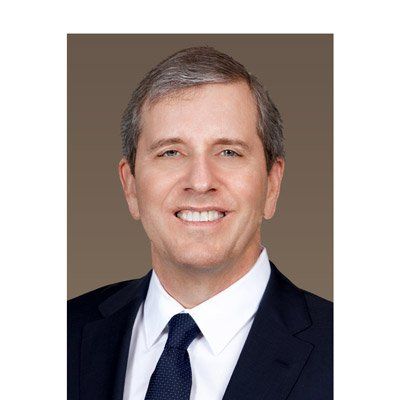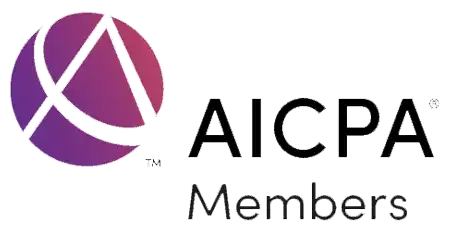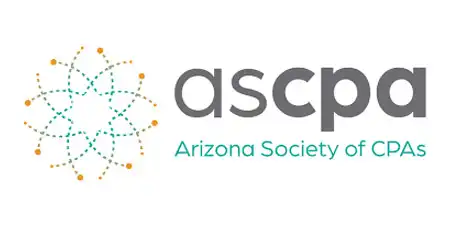(The link in the first paragraph originally pointed the reader to Guidance that was issued on June 24, 2020. Now it takes you to brand-new guidance that was issued today. There is an important update regarding administrative leave for governmental employees, which we will cover in our next article.)
New Guidance
Page 8 of the
FAQ
states that payments from the Fund may be used to meet non-federal matching requirements for Stafford Act assistance. Tribes that had been deterred from applying for Federal Emergency Management Agency (FEMA) funding due to matching requirements may want to reconsider their decision.
Page 8 now makes explicit that per capita payments are not eligible for reimbursement from the Fund. Tribes that have previously made per capita distributions now appear to be faced with two unappealing options.
- Option 1: Try to recharacterize the distribution as emergency assistance after the fact.
That would require the legal structure and administrative aspects discussed in our article, "The Coronavirus Relief Fund for Tribes," to be put in place. It would also require the Tribe’s auditors to get comfortable that the program was successfully brought into compliance with the General Welfare Exclusion Act and CARES Act requirements. We recommend that any Tribes considering this option consult with their outside accountants or auditors as the first step in a process that is bound to be burdensome.
- Option 2: Charge per capita distributions to the fund normally used – most likely the general fund or a per capita major fund.
This will mitigate against questioned costs arising during the Tribe’s Single Audit. Again, we recommend that Tribes consult with their accountants or auditors.
Page 8 also states that Fund payments may be provided to non-profits for distribution to individuals in need of financial assistance related to COVID-19. Tribes already had discretion to provide assistance to political subdivisions, businesses or individuals. We will explore this topic in the second section of this article.
Tribes may use the Fund to remarket their convention facilities and tourism industry. By extension, this includes their gaming properties. The FAQ states that the costs of such remarketing must satisfy the requirements of the CARES Act and has exclusionary language regarding a long-term plan to reposition the Tribe’s properties in the marketplace.
The FAQ provides a very helpful clarification regarding payroll expenses. Treasury is allowing the entire payroll cost of an employee whose time is substantially dedicated to mitigating or responding to the COVID-19 public health emergency. We renew our previous advice to maintain thorough documentation of employee time and effort to support charges to the Fund.
Assistance to Tribal Businesses and Related Parties
Tribes may have complex legal structures that include enterprises or other related parties that are defined as component units for financial statement reporting as well as entities that are not component units but are still part of the Tribe. The latter category may include schools, traditional Villages, or enterprises with a governance structure that excludes them from treatment as component units. Tribes may consider passing portions of the Fund to these entities to administer on behalf of their stakeholders.
We hear that some Tribes are asking, “Can we transfer funds to our casinos to cover their lost revenue?”
and “What should we consider in making that determination?”
The FAQ has language that may shed some light concerning a variety of fund transfers scattered throughout the document, so let’s start by gathering it in one place.
May a State receiving a payment transfer funds to a local government?
Yes, provided that the transfer qualifies as a necessary expenditure incurred due to the public health emergency and meets the other criteria of section 601(d) of the Social Security Act. Such funds would be subject to recoupment by the Treasury Department if they have not been used in a manner consistent with section 601(d) of the Social Security Act.
May a unit of local government receiving a Fund payment transfer funds to another unit of government?
Yes. For example, a county may transfer funds to a city, town, or school district within the county, and a county or city may transfer funds to its State, provided that the transfer qualifies as a necessary expenditure incurred due to the public health emergency and meets the other criteria of section 601(d) of the Social Security Act outlined in the Guidance. For example, a transfer from a county to a constituent city would not be permissible if the funds were intended to be used simply to fill shortfalls in government revenue to cover expenditures that would not otherwise qualify as an eligible expenditure.
The Guidance provides that eligible expenditures may include expenditures related to the provision of grants to small businesses to reimburse the costs of business interruption caused by required closures. What is meant by a “small business,” and is the Guidance intended to refer only to expenditures to cover administrative expenses of such a grant program?
Governments have discretion to determine what payments are necessary. A program that is aimed at assisting small businesses with the costs of business interruption caused by required closures should be tailored to assist those businesses in need of such assistance. The amount of a grant to a small business to reimburse the costs of business interruption caused by required closures would also be an eligible expenditure under section 601(d) of the Social Security Act, as outlined in the Guidance.
The Guidance provides that expenses associated with the provision of economic support in connection with the public health emergency, such as expenditures related to the provision of grants to small businesses to reimburse the costs of business interruption caused by required closures, would constitute eligible expenditures of Fund payments. Would such expenditures be eligible in the absence of a stay-at-home order?
Fund payments may be used for economic support in the absence of a stay-at-home order if such expenditures are determined by the government to be necessary. This may include, for example, a grant program to benefit small businesses that close voluntarily to promote social distancing measures or that are affected by decreased customer demand as a result of the COVID-19 public health emergency.
May Fund payments be used to assist impacted property owners with the payment of their property taxes?
Fund payments may not be used for government revenue replacement, including the provision of assistance to meet tax obligations.
The Guidance provides that ineligible expenditures include “[p]ayroll or benefits expenses for employees whose work duties are not substantially dedicated to mitigating or responding to the COVID-19 public health emergency.” Is this intended to relate only to public employees?
Yes. This particular nonexclusive example of an ineligible expenditure relates to public employees. A recipient would not be permitted to pay for payroll or benefit expenses of private employees and any financial assistance (such as grants or short-term loans) to private employers are not subject to the restriction that the private employers’ employees must be substantially dedicated to mitigating or responding to the COVID-19 public health emergency.
Must a State, local, or tribal government require applications to be submitted by businesses or individuals before providing assistance using payments from the Fund?
Governments have discretion to determine how to tailor assistance programs they establish in response to the COVID-19 public health emergency. However, such a program should be structured in such a manner as will ensure that such assistance is determined to be necessary in response to the COVID-19 public health emergency and otherwise satisfies the requirements of the CARES Act and other applicable law. For example, a per capita payment to residents of a particular jurisdiction without an assessment of individual need would not be an appropriate use of payments from the Fund.
May Fund payments be provided to non-profits for distribution to individuals in need of financial assistance, such as rent relief?
Yes, non-profits may be used to distribute assistance. Regardless of how the assistance is structured, the financial assistance provided would have to be related to COVID-19.
Are Fund payments considered federal financial assistance for purposes of the Single Audit Act?
Yes, Fund payments are considered to be federal financial assistance subject to the Single Audit Act (31 U.S.C. §§ 602-230-1040 and the related provisions of the Uniform Guidance, 2 C.F.R. § 602-230-1040 regarding internal controls, §§ 602-230-1040 through 602-230-1040 regarding subrecipient monitoring and management, and subpart F regarding audit requirements.
If a State transfers Fund payments to its political subdivisions, would the transferred funds count toward the subrecipients’ total funding received from the federal government for purposes of the Single Audit Act?
Yes. The Fund payments to subrecipients would count toward the threshold of the Single Audit Act and 2 C.F.R. part 200, subpart F re: audit requirements. Subrecipients are subject to a single audit or program-specific audit pursuant to 2 C.F.R. § 602-230-1040(a) when the subrecipients spend $750,000 or more in federal awards during their fiscal year.
Key Points
Does any of the above seem confusing or contradictory? In a word, yes. Does it seem to open a door to Tribes providing funds to casinos so the casinos can make distributions back to the Tribes? We hear that some Tribes may want to interpret the Guidance in support of that position. We have drilled into this topic to emphasize first principles and try to bring perspective that helps Tribes weigh factors effectively in their decision-making process.
Here are four key points that we believe Tribes should consider:
- Fund payments retain their character as federal financial assistance, whether made directly by Tribes or passed through to subrecipients.
- Fund payments made to or on behalf of Tribal entities count toward the $750,000 threshold for the entity to be subject to Single Audit.
- Tribes must be prepared to perform subrecipient monitoring.
- Expenditures from the Fund, regardless of which entity spends them, are subject to the eligibility restrictions in the CARES Act.
We previously recommended that, when Tribes consider how to provide assistance to businesses, they do so in a manner that does not risk the business becoming a subrecipient of the award. We have engaged in subsequent consultations that lead us to believe that is not possible. However, Tribes can get a leg up on subrecipient monitoring by providing the assistance on a cost-reimbursement basis ― i.e., reimburse costs that are substantiated by receipts and additional supporting documents in the case of significant purchases.
Procurement
We noted that the above Guidance referred to certain requirements of the Uniform Guidance but not others. We checked out the CFDA listing
and found this nugget:
The following 2CFR policy requirements are excluded from coverage under this assistance listing:
Subpart B, General provisions
Subpart C, Pre-Federal Award Requirements and Contents of Federal Awards
Subpart D, Post Federal; Award Requirements
Subpart E, Cost Principles
Subpart D is the section that includes Procurement Standards (§§ 602-230-1040.
Does this mean that Tribes have liberty to waive procurement standards when using the Fund?
Yes, if they go about it correctly. Remember that the Tribe is bound by the stricter of the federal standard or the Tribe’s standards as set forth in its procurement code, ordinance, policies and procedures. The Tribal Council may pass a resolution that waives its procurement standards when using the Fund, either on a case-by-case basis or for the life of the Fund.
Subpart E, Cost Principles is also excluded from coverage.
Does this mean that Tribes have liberty to spend the Fund in a lavish or extravagant manner?
A prudent Tribe will not test that question for two technical reasons:
- The Fund guidance states, “The statute also specifies that expenditures using Fund payments must be 'necessary.' The Department of the Treasury understands this term broadly to mean that the expenditure is reasonably necessary for its intended use in the reasonable judgment of the government officials responsible for spending Fund payments.”
- Subpart F, Audit Requirements does apply to the Fund. § 602-230-1040(c) Scope of audit - Internal control makes reference to the compliance supplement that auditors will follow when testing expenditures.
The compliance supplement is projected to be issued in September 2020 and may provide definitive guidance regarding allowable costs. Until such time, the prudent course of action is to rely on the Fund guidance that, to be allowable, costs must be reasonably necessary.
Aside from the above technical considerations, we always urge Tribes to be good stewards of the resources that are available to them.
Expenditure Timing
The June 30 update provides important clarifications regarding costs that were incurred between March 1, 2020, and December 30, 2020 (the “covered period”). Here are the highlights:
- Goods or services must be received during the covered period, but payment can occur later (generally within 90 days). There must be a COVID-19-related necessity for the goods or services to be received in that time frame.
- Leases of equipment and other property are eligible expenditures only for the covered period, regardless of when they are paid. For example, let’s say you enter into a one-year lease for $10,000 for the period July 1, 2020, through June 30, 2021. The Fund will cover only the first six months, or $5,000 of the lease costs.
- Goods delivered in the covered period need not be used during the covered period in all cases. Treasury is allowing bulk purchases to the extent that there is consistency with the Tribe’s procurement policies and practices and the goods will begin to be used in the covered period.
- The guidance states, “… the touchstone in assessing the determination of need for a good or service during the covered period will be reasonableness at the time delivery or performance was sought[.]” Tribes that are considering stockpiling goods are advised to be mindful of the principle that, to be allowable, costs must be reasonably necessary.
- Treasury recognizes the likelihood of supply chain disruptions that may delay delivery until after the covered period ends. They will allow the Fund expenditure if the Tribe obtained a contractual commitment from the vendor to deliver the goods by December 30, 2020, and delivery was delayed due to circumstances beyond the Tribe’s control.
- This guidance applies in a like manner to costs of subrecipients. The Tribe will need to monitor its subrecipients’ activities to ensure that they adhere to the same principles and practices.
Closing Thoughts
Tribes have now received their shares of both the first 60% distribution from the Fund and the final 40% distribution. They continue to operate in an environment that is replete with unknowns, although updates to the Guidance are helping to a degree. Tribes are relying on trusted advisors to help them navigate uncharted waters.
The pandemic continues to cause hardships and uncertainty in people’s lives. Tribes are continuing their efforts to “flatten the curve” and protect the health and well-being of their people. Despite their best efforts, I know personally one Tribal employee who caught the virus and another whose father lost his life to the virus. I am sadly sure that many of my readers can share such stories. We continue to pray for you and your loved ones.
